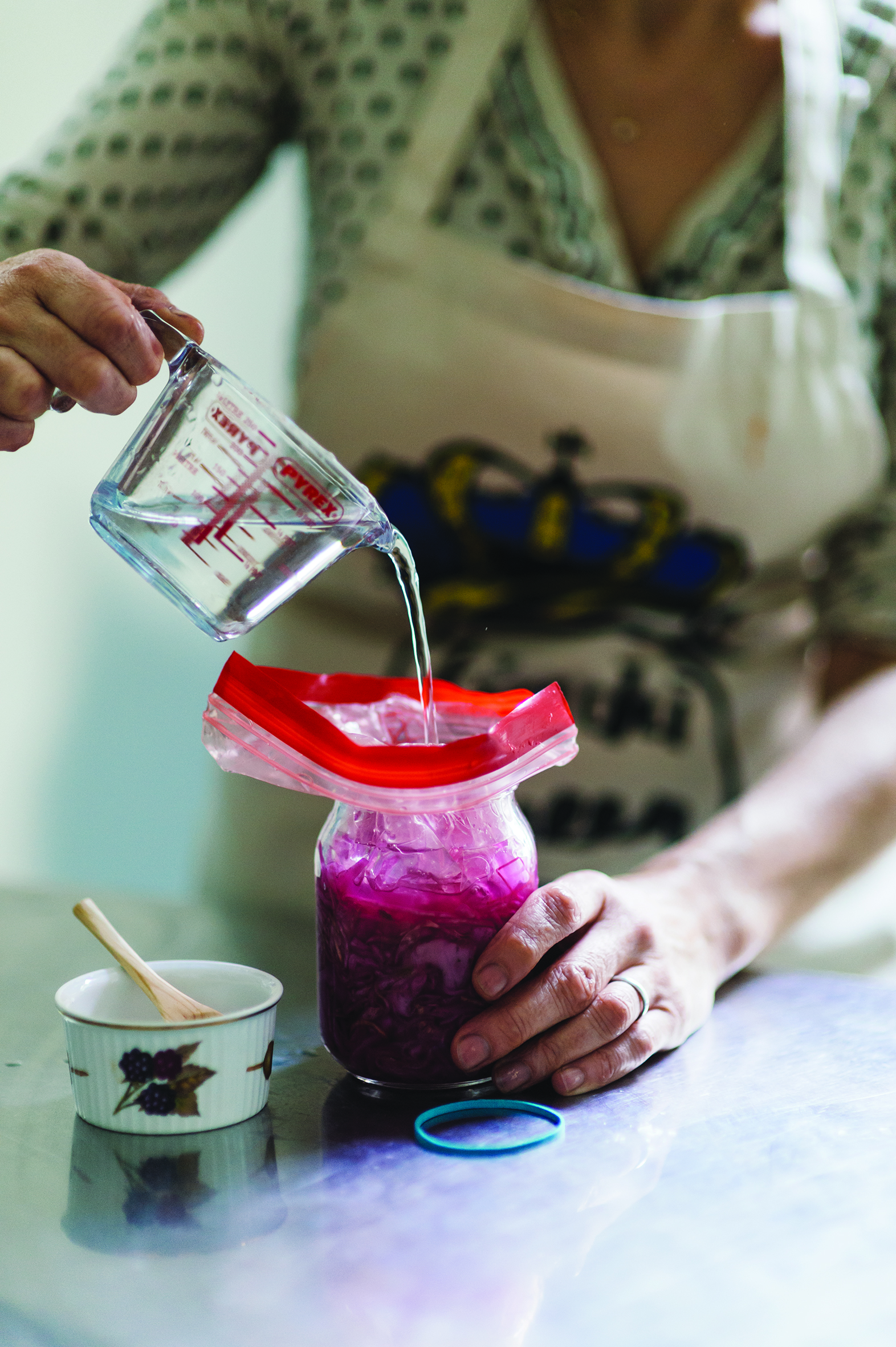Just over a year ago, in Wells, Somerset, a new Guinness World Record was set for the largest vat of sauerkraut ever made – 357kg – at the Sauerkrautathon, organised by two of the South West’s premier fermenters, Jo Webster and Katie Venner.
This is the recipe used for the challenge – and was also a component of the celebratory sauerkraut cake.
Equipment needed:
- Colander
- Scales
- Large bowl
- 1 litre jar – Kilner, plain, or a fermentation vessel, dishwasher-clean
- Submerging mechanism – a plastic bag and a rubber band will do, or baking paper and baking stones, or a small glass jar
Dr Caroline Gilmartin is a fermenting specialist with a background in microbiology. She sells her fermented products in stores near her Bristol home. See everygoodthing.co.uk



